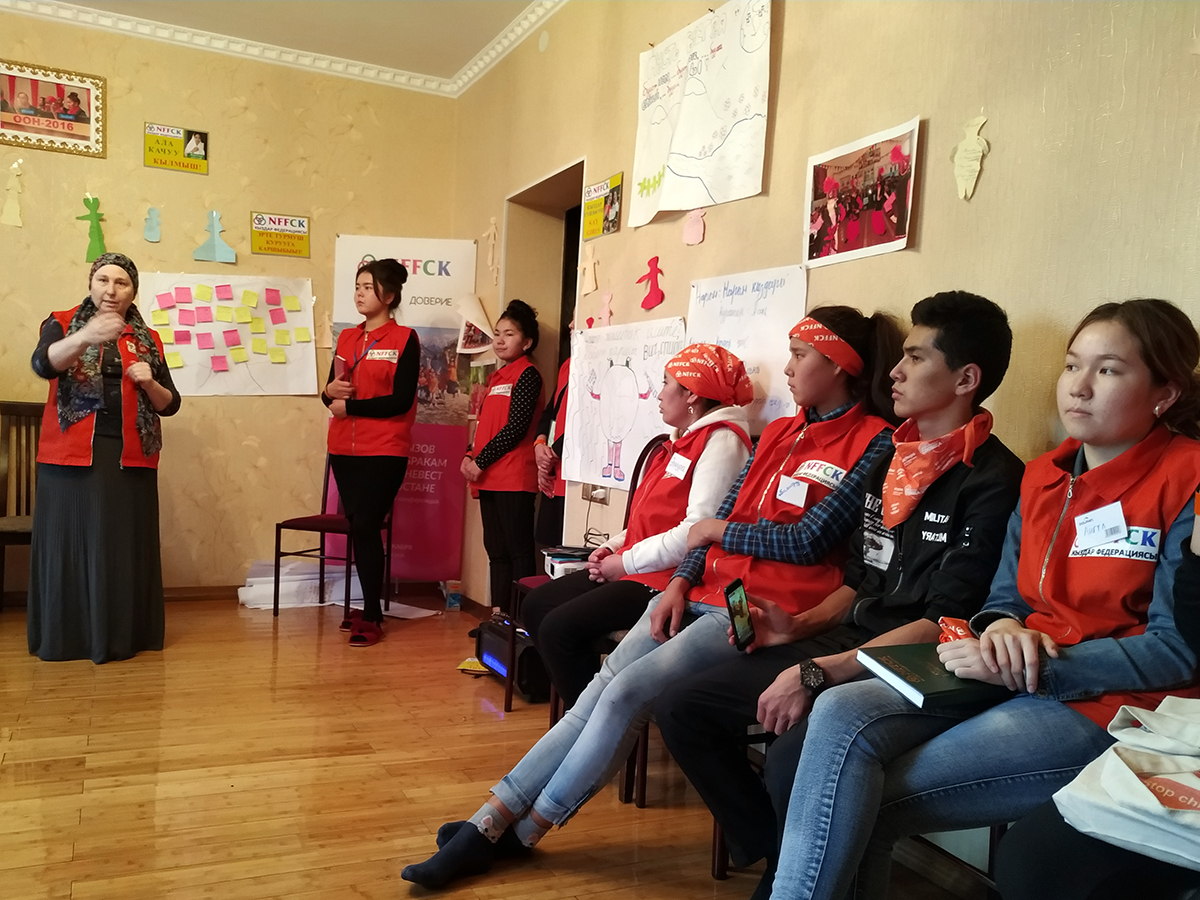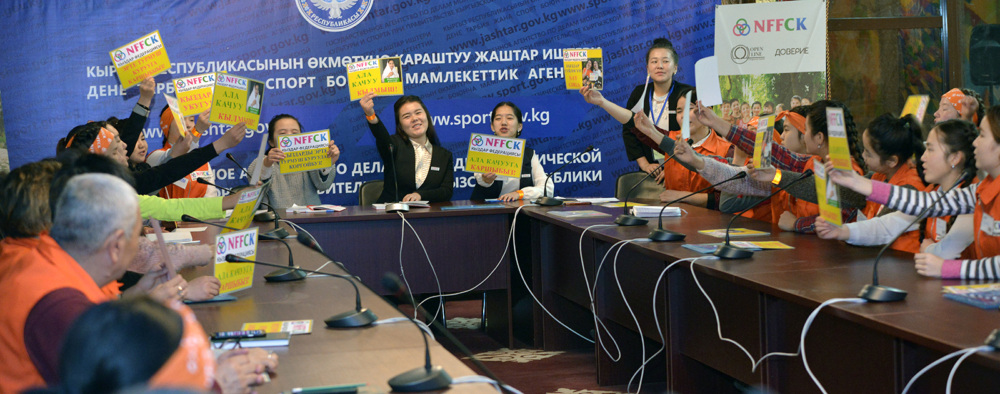
Sécurité et bien-être
Justice de genre, Sécurité et bien-être, Pouvoir des jeunes
The National Federation for Female Communities of Kyrgyzstan (NFFCK) takes girl leadership to heart in everything they do. The organization is made up of hundreds of members, all of whom are girls aged 12-18. Teen girls run most of the projects. A 19-year-old activist is Chair of the Board of Directors.
And although NFFCK’s Founder and Executive Director Altyngul Kozhogeldiyeva is now in her early 30’s, she is committed to keeping the leadership and direction of the organization young and for girls. As girls “age out” (by turning 18), they can remain as project managers but are not official members anymore.
The members, therefore, are always aged 12-18 and are the driving force in the development and implementation of projects. In this way, NFFCK keeps its programming and mission girl-centered at all times.
NFFCK needs members and allies all over Kyrgyzstan, a country that is so mountainous that communities are often isolated from one another and from normal social services and information. In many small communities, some people have brought back what they view as a traditional Kyrgyz practice – selling or kidnapping brides as young as 12 or 13 for forced marriages.
Early forced marriage means most girls in these communities never make it past the ninth grade. They often have multiple children before they reach the age of 20, and these young mothers don’t have the means to care for the children.
NFFCK was founded to fight this practice, and their approach is to face this challenge one village, one school, and often one family at a time.

The organization’s community activists are often from small villages. They use their familiarity with the culture and social norms to explain to their communities how early marriage deprives girls of the opportunity to take charge of their own futures, and can confine them to lives of poverty and violence.
NFFCK has found that their small interventions, in schools and in homes, yield a very high percentage of positive results. Families that talk with NFFCK activists usually choose to forbid their daughters from early marriage. Sometimes the families become community activists themselves, helping to change cultural practices that harm women and girls.
Not all girls’ activism is so successful at first, though. NFFCK girls are still figuring out what advocacy or intervention works best for each audience. At the government level, girls are still often fighting just to be acknowledged in the room.
During my recent site visit with NFFCK, the members explained to me that they were discussing a human rights declaration that the Kyrgyzstan government was planning to implement. The NFFCK members emphasized how the girl-focused component of the declaration had been passed over by the government, while other sections had been implemented. The NFFCK teens were completely ignored by the legislators until an older male ally started speaking about it.
In another incident, older women legislators scolded a girl activist when she became emotional while speaking about the problems for girls in Kyrgyzstan. They told her she was too young to understand these issues or have any say over them.
But these young leaders continue to find their voice. NFFCK members have spoken at the United Nations, have been featured on Kyrgyz media, and are motivated to keep learning and trying new approaches. They’ve inspired me – along with thousands in Kyrgyzstan and elsewhere, and will be the foundation of a new generation of female Kyrgyz leaders.
